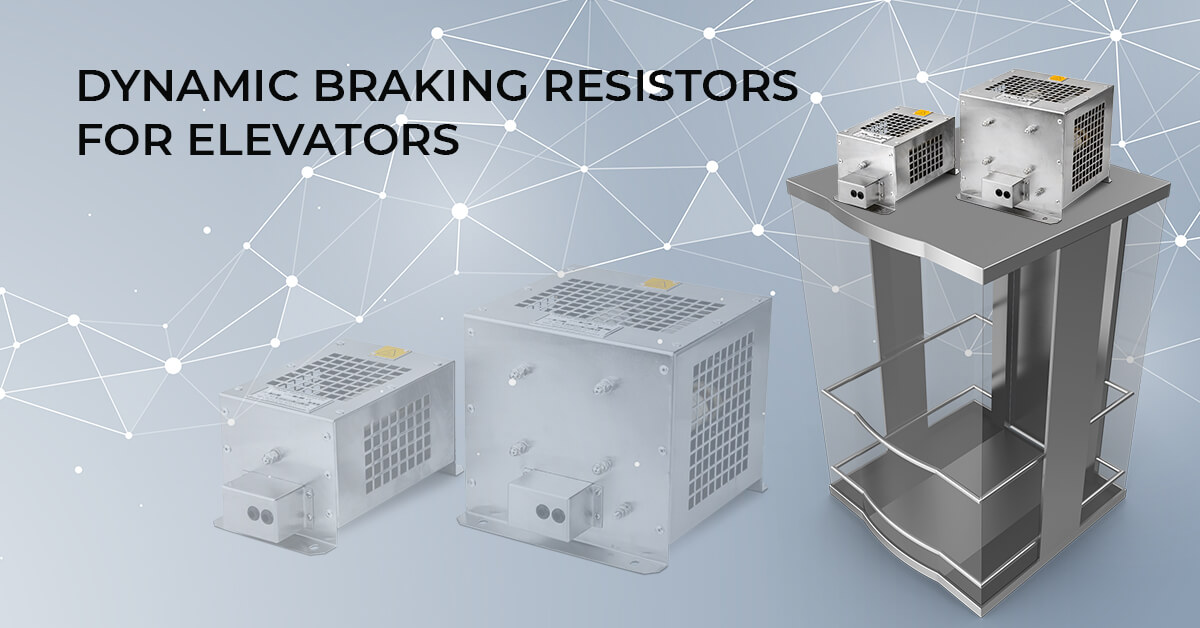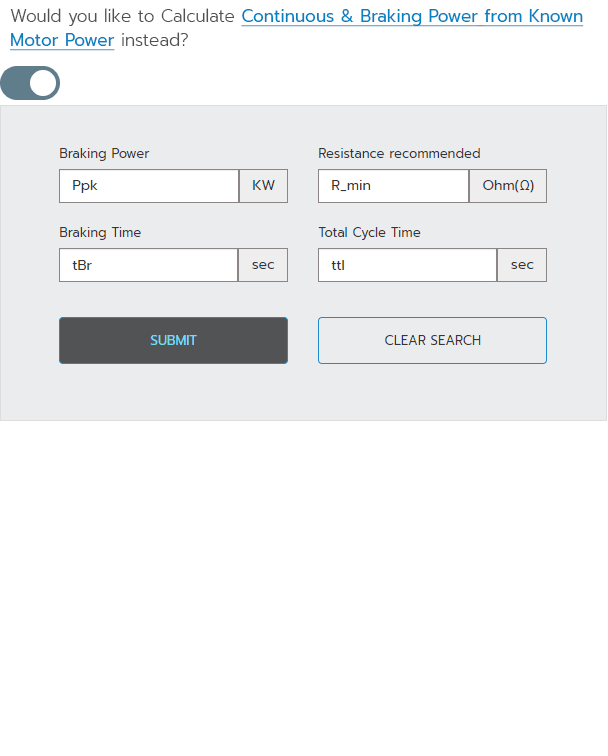
Dynamic Braking Resistors for Elevators – Impact on Elevators Efficiency
Elevator installations in residential and industrial high-rise buildings have become such a basic requirement that builders and engineers don’t pay special attention to it anymore. Elevators seem to be a fairly simple component in a massive building project during construction. However, they become a regular cause of breakdown and maintenance shut-offs afterwards. According to the U.S. Bureau of Labor Statistics and the Consumer Product Safety Commission, thousands of people sustain injuries, and in few cases even fatalities due to elevator malfunction every year.
One of the most critical factors influencing an elevator’s performance and safety is the braking mechanism. The braking system is responsible for ensuring its safe downward slide, slow down and stopping at the appropriate levels within the designated times. The margin for error is near Zero in any industrial equipment that involves human safety, so the braking mechanism must guarantee not 99%, but near 100% reliable performance every time.
- How the braking system works in elevators?
- Factors influencing Elevator Braking
- How to choose the right Braking Resistors?
- Why do Dynamic Braking Resistors fail in elevators?
- Dynamic Braking Resistors from KWK
- Braking Resistor Calculator
How the braking system works in elevators?

Image Courtesy – https://electronics.stackexchange.com/questions/436298/brake-resistor-in-regenerative-case-for-elevator
OR

Figure 1 – A Simple Electric Braking System

Figure 2 – Applying the Electric Brake
Image Courtesy: http://www.engineeringexpert.net/Engineering-Expert-Witness-Blog/dynamic-brakes
There are 3 primary functions that the braking system performs in elevators.
They are:
- During normal operation, the elevator must be held stationary and stable at each stop.
- During downward movement, there must be smooth, quiet, and uninterrupted movement of the passenger cubicle.
- During an emergency such as power shut down, rope snapping, free fall or other failures, the lift cubicle must be brought to an immediate stop.
Modern passenger elevators are generally fitted with two or three types of braking systems, for redundancy purposes.
They are:
- Built-in braking systems connected to the roped elevator cubicles or safeties that grab onto the rail when the cubicle moves too fast.
- Electromagnetic brakes that engage when the lift cubicle stops. The electromagnets maintain the brakes in open position, they are meant to shut automatically if the elevator suddenly loses power.
- Automatic braking that is present at the top and bottom of the elevator shaft. This is to prevent the lift cubicle from moving too high or too low.
At the heart of the elevator control system is the inverter, or variable-frequency drive (VFD). It provides power and control to the elevator hoist AC motor. When the motor has to be brought to a stop, the VFD with the aid of the braking resistor acts like an electrical braking system instead of employing mechanical braking. The excess energy present in the rotating system has to be dumped somewhere quickly and that is the basic function of the Dynamic Braking Resistor.
Factors influencing Elevator Braking
The problem with designing braking systems for elevators is that there cannot be a universal standard for elevator functionality. The requirements vary widely based on some factors such as:
- Commercial or residential use – Commercial lifts make more stops than residential lifts simply because of greater footfall. So the braking system will undergo greater wear and tear.
- Height of building– The taller the building, the greater the potential energy that needs to be offset. So the downward movement has to be carefully calibrated. Counterweight mechanisms in combination with braking systems are employed for this.
- Operating Temperature – The major heat generating equipment in the machine room is the elevator machine motor that raises and lowers the elevator cubicle through several steel ropes, and the controller. Excessive heat can lead to braking resistor burnout. The controller must operate within temperature parameters, so it is fan vented.
- Number of stops – How many floors are to be covered and the floor height per stop also matters.
- Physical size, weight capacity – Translate into energy per stop and the duty cycle. These factors impact the power specifications of the braking resistor.
How to choose the right Braking Resistors?
Typically resistor manufacturers are given just two inputs to choose the appropriate resistor for elevator applications. These are the ohmic value and power of the resistor. For example, an elevator manufacturer may come with a requirement of 1000W and 50 Ohms.
To calculate the right size of the resistor you need the characteristic data of the load cycle: brake time or duty cycle and the total cycle time. Furthermore, you need the brake power Pbr and the minimum resistance value Rmin which is defined by the VFD.
Due to production tolerance and temperature coefficient, the recommended resistance value is significantly higher than the minimum resistance value. Here we use a safety factor of 20 % (R = 1.2 x Rmin), effectively preventing possible damage to components of the VFD due to high currents. With these calculations made, engineers can determine the required DBR peak and average power, which in turn helps to ascertain the right DBR for the job.
Why do Dynamic Braking Resistors fail in elevators?
Generally, the dynamic braking resistors burning or failure happens due to higher braking energy dissipation than its power rating.
The elevator control panel is the key engineering control mechanism of the entire elevator. Unlike VFD panels, the control panel in an elevator is not a standardised one. In most cases, the elevator manufacturer works out the appropriate braking resistor requirements only after the elevator design is complete.
If the elevator panel design process can involve the resistor manufacturers at the start itself, then all other impacting factors can be worked out and the best resistor choice can be made.
Just like any other electrical component, elevator brakes are also susceptible to dirt/dust accumulation. Some exposed parts may get exposed to oxidation/ corrosion due to moisture. Poor or excess lubrication are both to be avoided. Periodic preventive maintenance can help mitigate many of these failures.
The reputed builders generally go with the major established Elevator manufacturers. Some small players may try to cut budgets and get cheaper, imitated elevator designs.
In today’s market scenario, the elevator cubicle operating panel is openly available for a few thousand rupees on online portals! But there are no guarantees on some of these inexpensive non-standard options, and they might lead to maintenance issues and break-down after installation.
Dynamic Braking Resistors from KWK
KWK Resistors has been the preferred partner of several leading manufacturers of Elevators & Cranes, Locomotives and Material Handling systems for supplying Dynamic Braking Resistors. We have had a long and mutually rewarding relationship with many elevator manufacturing companies, both in India and abroad.
One of the reasons for the growth and success of KWK resistors is the comprehensive approach to resistive solutions. Apart from a wide range of standard resistors that can be ordered from our product catalog, we specialise in providing expert consultation and custom designed solutions to OEMs to match their exact need. Our expert design and engineering team can work in collaboration with the OEM right through the equipment design/delivery phases and suggest the best suited resistor solutions.
KWK Resistors has the expertise to design and manufacture customised application specific resistors that are particularly good at handling high pulsed powers. Dynamic Braking Resistors from KWK come with varied resistance, power and current ratings. KWK Resistors also require very little service and maintenance. These heavy-duty resistors are designed to be rugged so as to withstand heavy loads and frequent start-stop cycles.
Resistors come in different form factors like edge-wound and wire-wound resistors. Space availability for installing the DBR is also a factor. KWK Resistors come with various construction types and mounting specifications to suit the space availability.
The KSR series is a radial type of high energy, wire-wound power resistors with non-flammable silicone cement coating designed for continuous power applications. They offer high stability and are available in a wide range of resistance values. Non-Inductive and Variable type resistors are also offered in this series. Customization on termination and mounting can be done with ease. The KSR series also comes with a radial type edge wound variant.
The KABR series from KWK are a range of metal encased, Dynamic Braking Resistors. These resistors are economical and compact, offering excellent load life stability. Power dissipation of up to 1000W is available in this series. Assemblies of these resistors to achieve higher powers can be done with ease.
The KAHB series are high power Dynamic Braking Resistors with Aluminium casing. Power dissipation of up to 5000W is available in the KAHB series. Custom wattage can be designed and supplied on request.
The KCBR series of wire-wound braking resistors guarantee high stability and are designed to suit inverter drives of various makes. A wide range of resistance values are available in 0.5kW to 12kW Braking Resistors. The specially designed Helical Coil type resistor elements are used for high efficiency and faster cooling.
KWK’s product offering is not limited to these catalogue products. Numerous quantities of kW braking resistors are being custom designed for customers every day.
Braking Resistor Calculator
A good example of our custom resistor design capabilities is the Braking resistor calculator tool. It is freely available on the KWK website for determining the Continuous Power (Pcont) from a known Braking power. It is useful in estimating resistive requirements for a particular application. It also helps you in identifying the most appropriate product range offering from KWK resistors.

Try Our Braking Resistors Calculator


